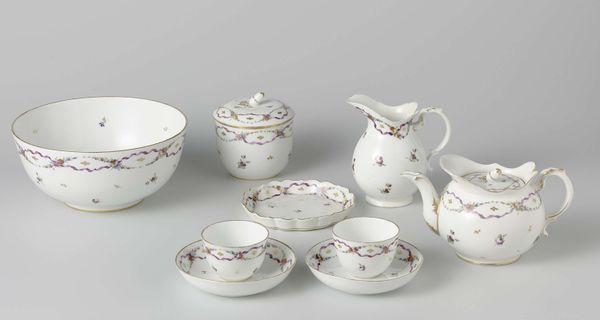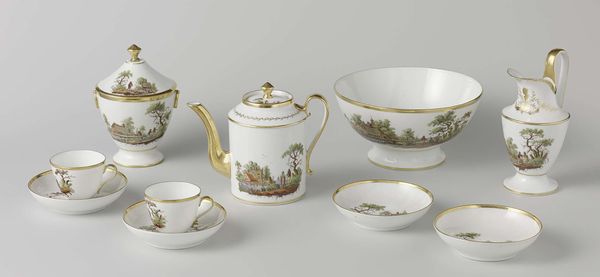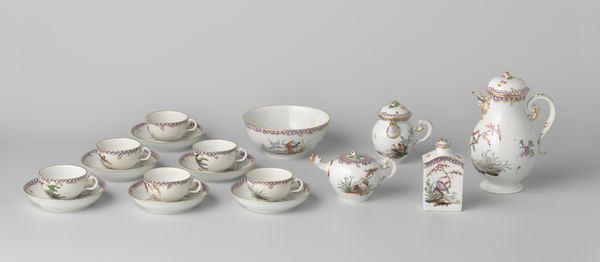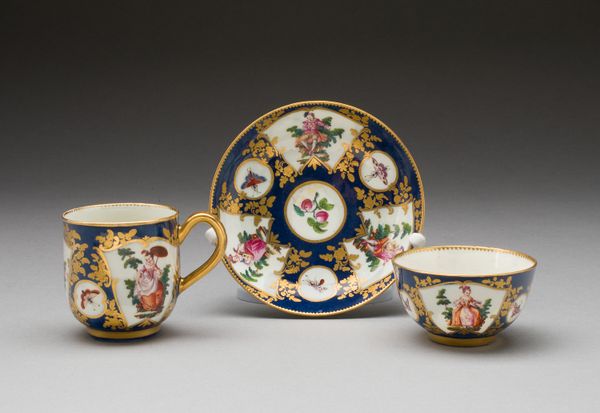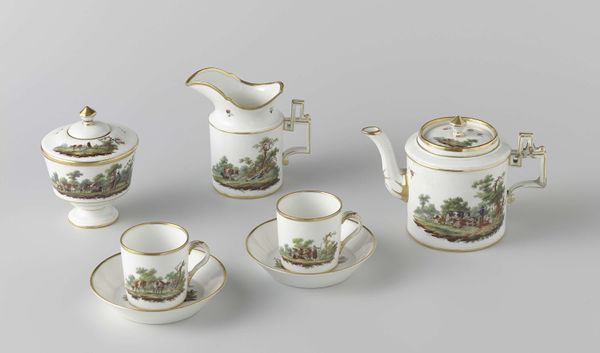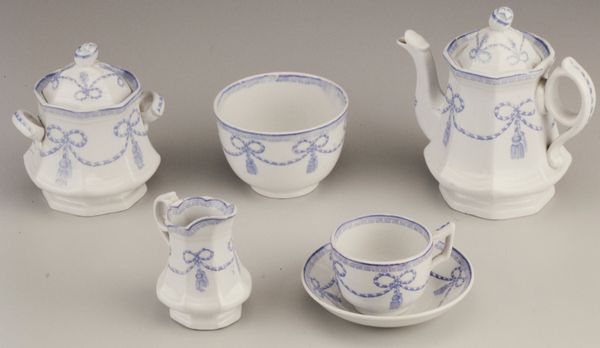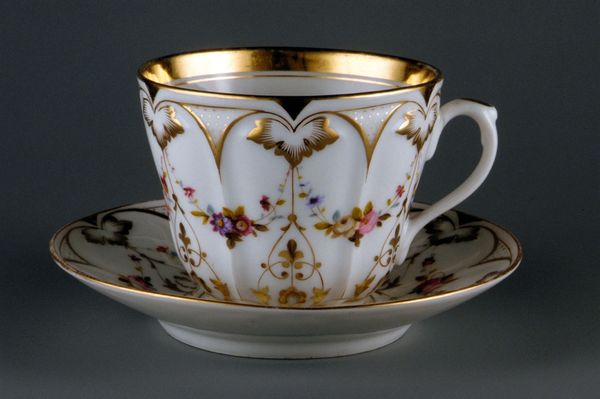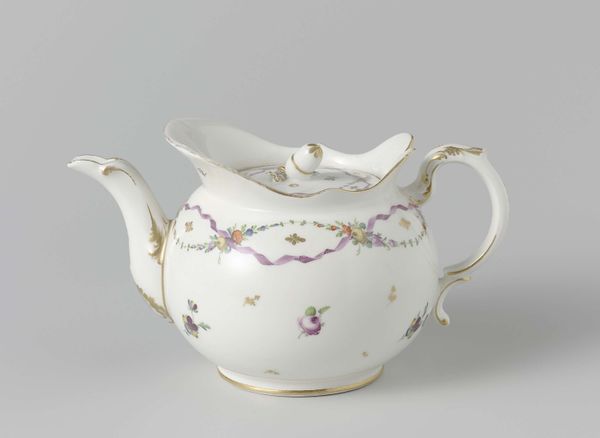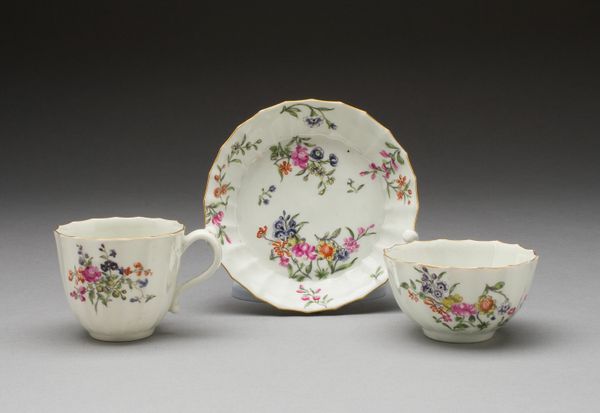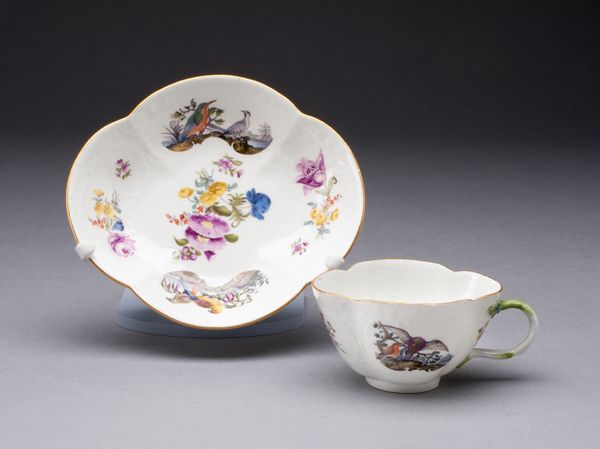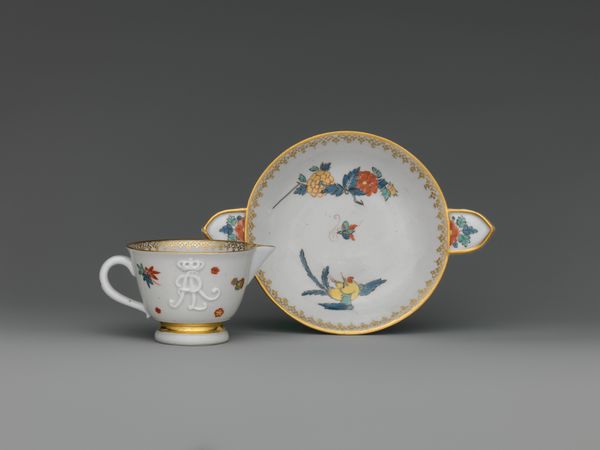
ceramic, porcelain
#
ceramic
#
porcelain
#
ceramic
#
decorative-art
Copyright: Rijks Museum: Open Domain
This porcelain tea service was made by Koninklijke Porseleinfabriek Dommer & Co., but we don’t know when. While the factory operated in the Netherlands between 1826 and 1906, services like these tell us a lot about how social rituals of bourgeois life were becoming ever more formal. The painted decoration is what gives these objects their real interest: musical instruments and ribbons, trophies, and, most unusually, what appears to be a garden tool or a primitive type of lawnmower. These images signal an appreciation for leisure activities, but they also reflect a clear hierarchy of value. We can see this appreciation in the care and expense put into this set. The musical instruments, for example, were favored pastimes for upper-class women, while the garden tool alludes to the management of land and the enjoyment of nature. These associations create a narrative of refinement, taste, and social standing. Historians can study trade records, museum archives, and the biographies of factory owners, designers, and consumers to understand how social structures of taste are constructed. We can then better understand the meaning of art as something contingent on social and institutional contexts.
Comments
No comments
Be the first to comment and join the conversation on the ultimate creative platform.
